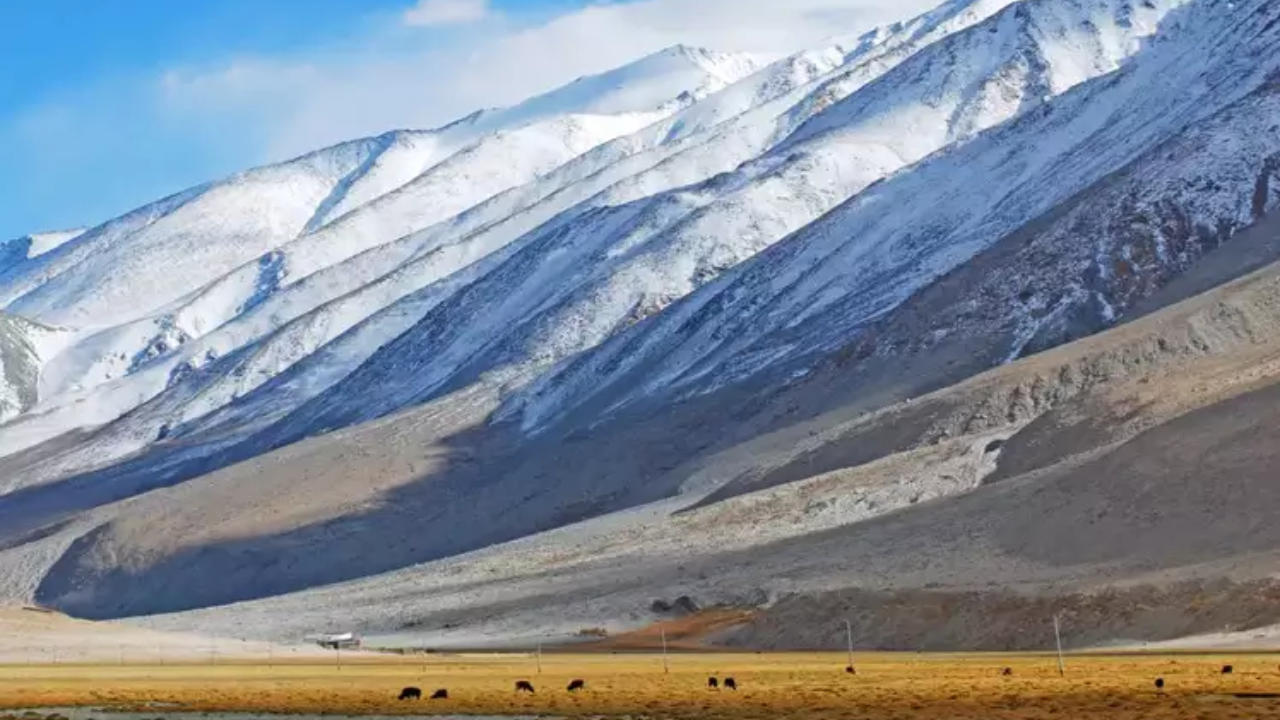[ad_1]
NIMLI (ALWAR): The Himalayan region of India has become the epicenter of climate-related disasters, accounting for a staggering 44 percent of all reported incidents across the nation between 2013 and 2022. Floods, landslides, and thunderstorms, totaling 192 events, have ravaged the region, with recent calamities serving as ominous preludes to an intensifying environmental crisis.
The latest findings from the State of India’s Environment 2024 report, unveiled during the annual Anil Agarwal Dialogue by the Centre for Science and Environment (CSE), shed light on the dire state of the Himalayas.Kiran Pandey, head of CSE’s Environment Resources Unit, warns of an alarming trend marked by increasingly frequent and severe disasters wreaking havoc on lives and property.
Of particular concern is the rapid melting of glaciers in the Hindu Kush Himalayas, with a staggering 65 percent acceleration in glacier mass loss. According to a study by the International Centre for Integrated Mountain Development (ICIMOD), glaciers in the region lost 0.28 meters of water equivalent per year from 2010 to 2019, compared to 0.17 meters per year from 2000 to 2009. Even the previously stable Karakoram Range is witnessing a decline in glacier mass.
Izabella Koziell, ICIMOD’s deputy director general, underscores the critical importance of the Himalayan glaciers, which sustain the livelihoods of two billion people in Asia. The consequences of their disappearance, she warns, are too catastrophic to contemplate without urgent action from world leaders.
The melting glaciers are not only exacerbating the loss of ice but also giving rise to glacial lakes, whose numbers have surged from 127 in 2005 to 365 in 2015 in Uttarakhand and eastern Himachal Pradesh. The overflow or bursting of these lakes, exacerbated by increasingly frequent cloudbursts, poses grave threats downstream.
With over 40 percent of their ice already lost, the Himalayas are projected to lose up to 75 percent by the century’s end, leading to a significant shift in vegetation lines and impacting the livelihoods of millions dependent on the region’s resources. The loss of permafrost further compounds the crisis, with studies indicating significant declines in areas like the Uttarakhand Himalayas.
Dr. Kalachand Sain, head of the Wadia Institute of Himalayan Geology, stresses the need for coordinated action involving national governments, local communities, experts, and the media to address the root causes of these disasters. He emphasizes that halting development in the Himalayas is not the solution but calls for sustainable development guided by comprehensive stakeholder consultations.
As the Himalayan region stands at a critical juncture, the urgency of mitigating climate-related risks and safeguarding its fragile ecosystems cannot be overstated.
The latest findings from the State of India’s Environment 2024 report, unveiled during the annual Anil Agarwal Dialogue by the Centre for Science and Environment (CSE), shed light on the dire state of the Himalayas.Kiran Pandey, head of CSE’s Environment Resources Unit, warns of an alarming trend marked by increasingly frequent and severe disasters wreaking havoc on lives and property.
Of particular concern is the rapid melting of glaciers in the Hindu Kush Himalayas, with a staggering 65 percent acceleration in glacier mass loss. According to a study by the International Centre for Integrated Mountain Development (ICIMOD), glaciers in the region lost 0.28 meters of water equivalent per year from 2010 to 2019, compared to 0.17 meters per year from 2000 to 2009. Even the previously stable Karakoram Range is witnessing a decline in glacier mass.
Izabella Koziell, ICIMOD’s deputy director general, underscores the critical importance of the Himalayan glaciers, which sustain the livelihoods of two billion people in Asia. The consequences of their disappearance, she warns, are too catastrophic to contemplate without urgent action from world leaders.
The melting glaciers are not only exacerbating the loss of ice but also giving rise to glacial lakes, whose numbers have surged from 127 in 2005 to 365 in 2015 in Uttarakhand and eastern Himachal Pradesh. The overflow or bursting of these lakes, exacerbated by increasingly frequent cloudbursts, poses grave threats downstream.
With over 40 percent of their ice already lost, the Himalayas are projected to lose up to 75 percent by the century’s end, leading to a significant shift in vegetation lines and impacting the livelihoods of millions dependent on the region’s resources. The loss of permafrost further compounds the crisis, with studies indicating significant declines in areas like the Uttarakhand Himalayas.
Dr. Kalachand Sain, head of the Wadia Institute of Himalayan Geology, stresses the need for coordinated action involving national governments, local communities, experts, and the media to address the root causes of these disasters. He emphasizes that halting development in the Himalayas is not the solution but calls for sustainable development guided by comprehensive stakeholder consultations.
As the Himalayan region stands at a critical juncture, the urgency of mitigating climate-related risks and safeguarding its fragile ecosystems cannot be overstated.
[ad_2]

